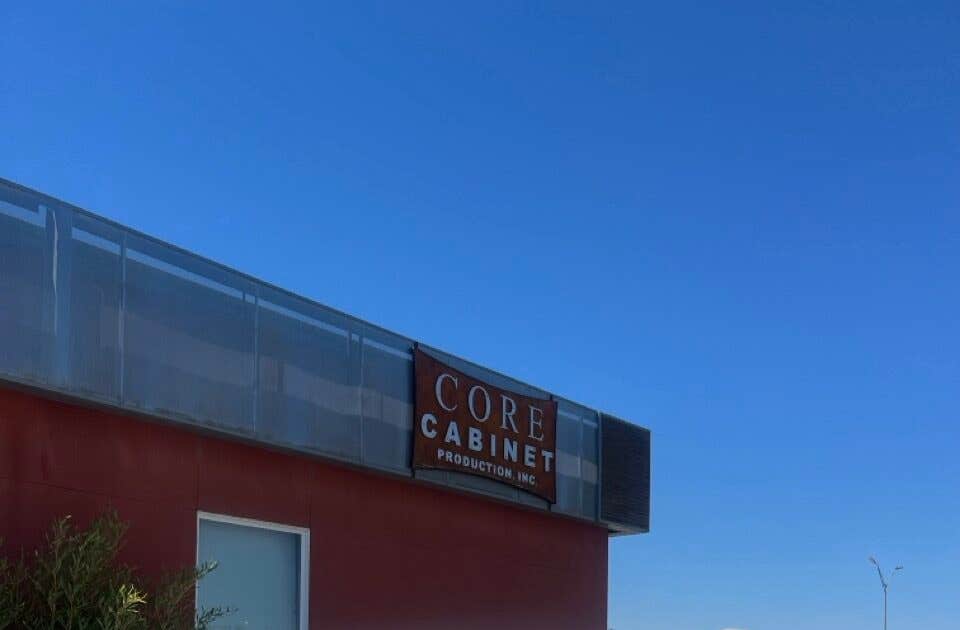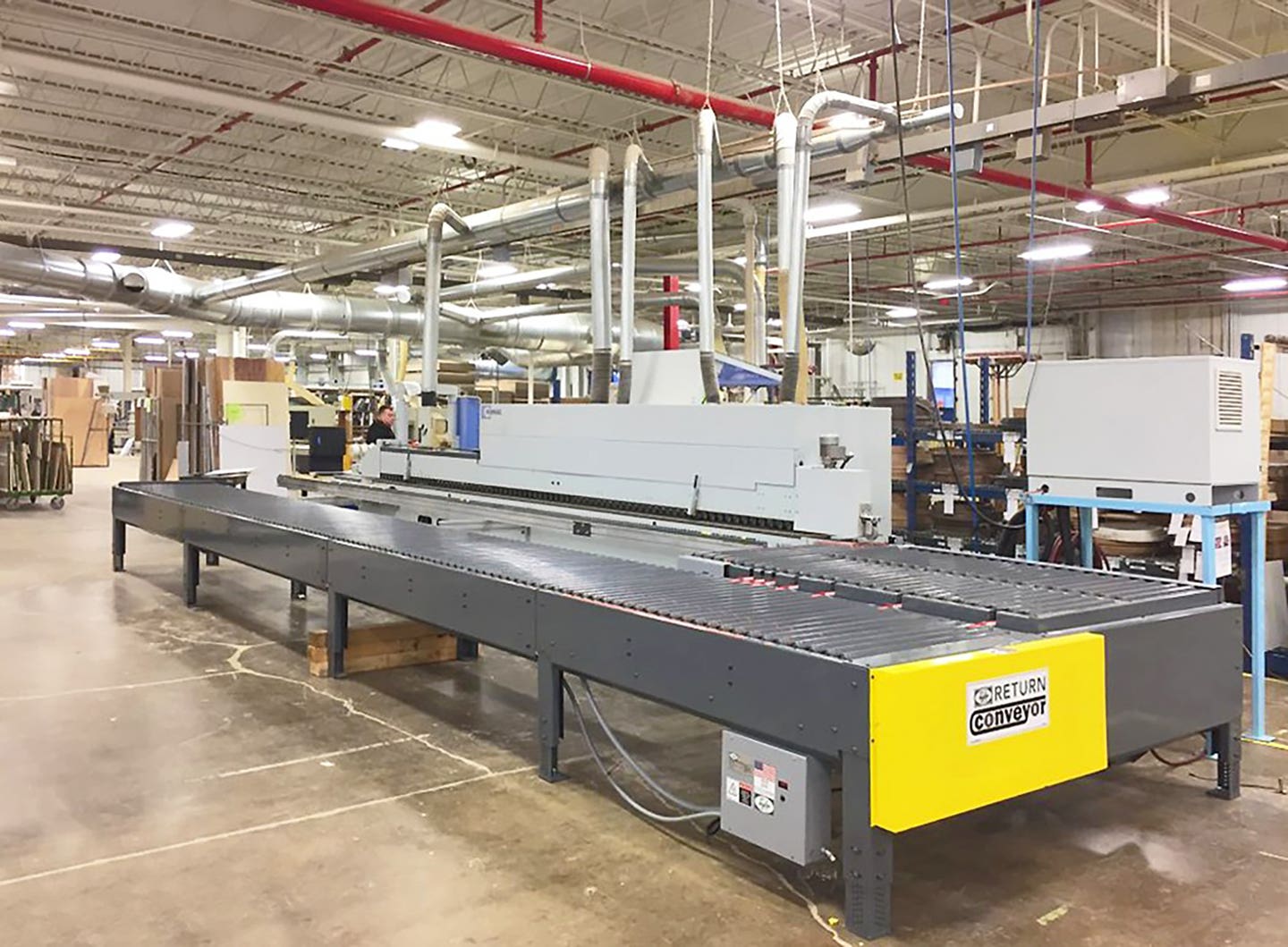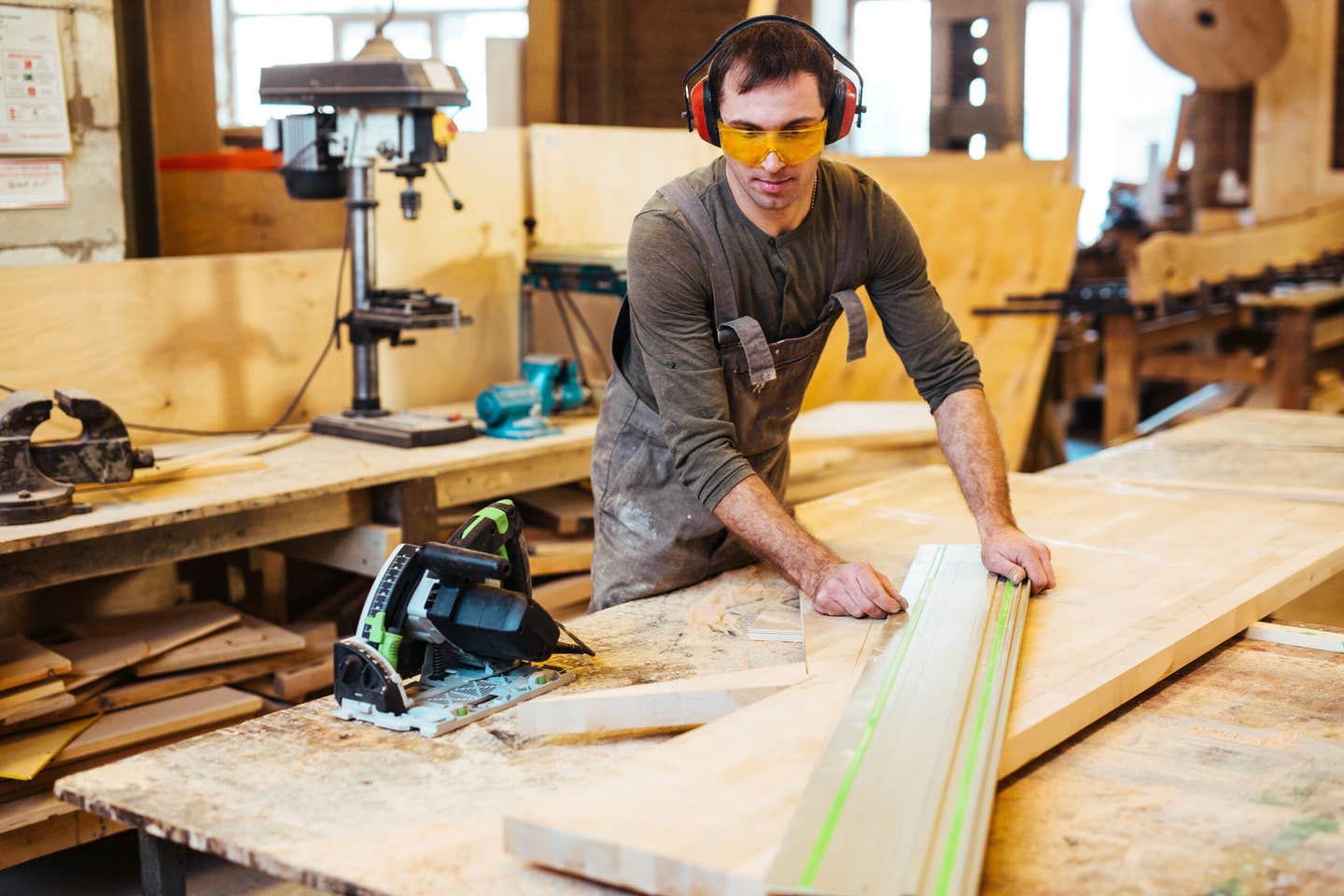In the right direction
Visit with woodshop owners or go to online forums on the subject of choosing a CNC setup and a couple of concerns will jump out right away. Most of the…
Visit with woodshop owners or go to online forums on the subject of choosing a CNC setup and a couple of concerns will jump out right away. Most of the conversation won’t be about the actual machines. Even if the chat begins that way, it will eventually turn to software.
New users are overwhelmingly nervous about learning it and are especially concerned about the time commitment it requires to do so. They are all used to buying software programs from large companies such as Apple or Adobe and finding out how difficult it is to talk to a live person for support. Here’s some good news: almost every cabinet program on the market has decent — if not downright outstanding — support. There are phone numbers and websites provided by the software companies and huge user forums for every aspect of CNC operations from programming to machine repairs. Plus, many of the program designers and engineers actually own and/or run these relatively small companies, so there is still a somewhat personal atmosphere in this market.
Once they’re up and running, new users also worry about the amount of time it will take to draw a cabinet or part or even make a simple adjustment like adding a hinge hole. It’s hard to get your head around spending more time drawing and less time milling. And for a while, it will probably take a bit longer to get jobs out the door. But not for very long.
At the top of the learning curve, when the CNC operation is up and running smoothly, the quality of the job soars and the number of man-hours declines. Plus, there’s another benefit that is especially valued by older woodworkers: sitting at a computer and telling a machine what to do is a lot less physically demanding than endlessly clamping on straightedges and milling dadoes with a portable router or moving a jig to plow cavities for 35mm hinges.
Tech talk seems to be a big concern, too. Words and phrases such as DXF batch imports, nesting, tool paths, screen-to-machine, tool changer and so on are apparently intimidating to guys who have been building casework the old-fashioned way for 20 or 30 years and just want to upgrade. They don’t want to learn a new language. Younger shop owners don’t seem to have the same fears: perhaps coming of age in a digital world has made them more comfortable. Yes, there is a new vocabulary to learn, but it really isn’t terribly complex.
Pricing, while certainly an issue, doesn’t seem to be at the top of most shop manager’s worry lists. They understand that this is serous technology and they are generally prepared for the sticker shock. Folks who have actually made the jump mention that the actual machine isn’t always the biggest expense. Tooling and training can add significantly to the cost of the machine/software package.
The following quote from a forum on Woodweb (woodweb.com) sums up the situation:
“I think you have to include the software in the price while shopping for a machine. The software is just as important as the machine and can add $10,000 to $20,000 to the cost. You probably need to look first at what you want the machine to do for you and look to the future. I would think a tool changer is a must have. An inexpensive machine that won’t do everything you want it to do is no bargain. The same goes for your software.”
One training cost often overlooked is the fact that a shop needs to get more than one employee up to speed on the software as well as the hardware. Without a backup person, production stops if an operator calls in sick, goes on vacation or finds a new job.
Cost estimates
Figuring out the return on investment (ROI) is tricky too, especially when accountants get involved and start talking about depreciation. There’s really no way to accurately gauge cost savings until several jobs have been run through the new setup. It’s important to keep a log of the way the shop runs now and the way it runs after the new machine is in place. What you’re looking for is how much work passes through (usually measured in terms of its dollar value/gross receipts), and how many man-hours were spent getting that done.
Up front, when estimating whether or not a CNC is a good investment for a small shop, the spreadsheet needs to include more than direct costs and savings. Add in any ancillary costs such as estimated changes in the electric bill, insurance, dust collection, loan interest, heating/cooling and rent, if you’re going to need more floor space. Deduct cost savings such as payroll (including workers’ comp, unemployment insurance, employer contributions etc.). It’s a good idea to hand it all to a bean counter and let him or her analyze the numbers. They can then tell you whether it’s best to buy or lease the machine, or perhaps rent the software, and they might be able to weigh in on another critical decision — how much machine do you need? That boils down to what you want to be able to make now, but also where you see the shop going in the future. A small shop that’s building kitchens has a different agenda than one making something like gunstocks, canoe paddles or one-off furniture.
Small CNC options
If the shop is only making a few small parts, a desktop CNC might be all that’s needed. They cost about the price of a decent table saw and are ideal for shallow relief carving or lettering (signage) jobs. The software is often included, but it might only work on Windows computers, so ask up front if you’re running a Mac.
One very familiar name in this field is ShopBot. Its version of the desktop CNC comes in a couple of different base platforms, either with a 2-1/4-hp Porter-Cable router or else with a 1-hp industrial spindle. It will work on projects up to 18” x 24” x 5-1/2” tall, so it’s ideal for engraving door panels.
These machines are also quite affordable. For example, ShopBot’s model 10199 is listed at $4,995 (Sept. 2014), and that includes VCarve Pro and PartWorks3D software for designing, plus ShopBot’s own control software. Those packages require a PC that is running Windows XP/Vista/7/8.
If design software seems intimidating, there’s good news here: these programs actually simulate the cutting of parts, so you can verify that they will be created just as you intend. That is, you can actually see what you’re getting, so it’s quite intuitive. Another huge advantage to owning a ShopBot is that the company provides free telephone technical support seven days a week from its headquarters in Durham, N.C.
Shops that make short runs of complex parts (perhaps a few cabinet pulls at a time, single prototypes or maybe unique pieces of sculpture) might want to look at a five-axis CNC milling machine. A small startup company in Montana called Pocket NC (pocketnc.com) is working on a model that they will release next year in the $3,500 range. Both the spindle (which is equipped with 1/8” end mills) and the table can move, which opens up a lot of design possibilities for products such as finials and other trim details.
When a manufacturer says its CNC operates in three axes, it means the cutter moves left-right, back-forth and up-down. The Pocket NC cutter (which is held in an industrial-grade, highly accurate spindle) only moves left-right and back-forth. But the table that the part is attached to also moves and it travels up-down, swivels on a vertical axis and rotates on a horizontal axis. That means it can work on five faces of a cube without having to shut down and reposition.
“Because this machine can be used by so many industries in so many different ways,” says engineer Michelle Hertel of Pocket NC, “we’re not bundling it with one specific software package. A great option for woodshops is Autodesk Fusion 360.” That’s a cloud-based CAD/CAM design package that starts at $25 a month. Cloud-based simply means that your work is backed up on a mainframe computer off site, so if you have a computer problem at the shop, you don’t lose any of your designs. CAD is computer-aided design (it draws the part), and CAM is computer-aided manufacturing (it tells the machine to make the part you drew).
The smallest and least expensive option for a shop looking at desktop CNC is to actually build a machine and a company called My D-I-Y CNC (mydiycnc.com) can help make that happen. Their supply plans and parts in kit form. Complete kits/turnkey systems run from $625 to $1,045 and, to be frank, it looks like a whole lot of fun. However, this is an option for a one or two-man shop with some time on their hands.
This article originally appeared in the October 2014 issue.







